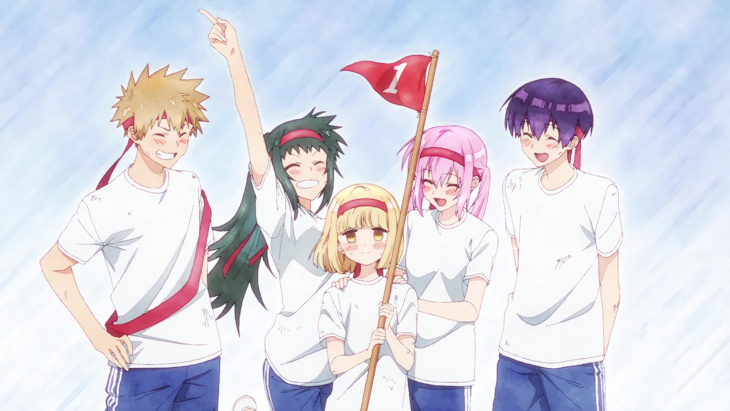
“My girlfriend is cute, and also… the coolest girl in town!”
Of the three shows I followed this spring that could best be categorized as comedies, Shikimori’s Not Just a Cutie is the one that never quite fell into place for me. Despite being one of the more highly anticipated series of the season and possessing some decent comedic chops, the narrative structure always came across as loosely focused and lacking direction. On a few occasions, I felt the need to check whether the manga was actually a 4-koma series, because this feels a lot like a 4-koma adaptation. The show jumps from one slice-of-life scenario to another rapidly, and yet the pacing feels simultaneously too fast and too slow. The problem isn’t with the humor itself, but with the romance half of this romantic comedy. The more I watched, the less I cared about the lead couple. Both have the potential to be engaging characters, but they’re probably the least interesting ones in their circle of friends, and the show is much more interested in school events than in developments in their relationship. Shikimori’s Not Just a Cutie is a decent comedy in a season ruled by comedy, so it’s worth checking out, but when compared to other recent shows, it probably shouldn’t be anyone’s highest priority.
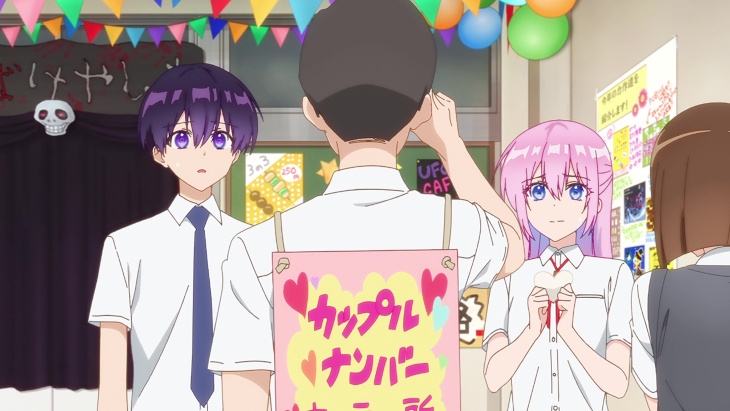
The show’s primary leads are Yuu Izumi and Shikimori… actually, I guess she’s never given a full name. They each have their own issues which compliment one another. Izumi struggles with daily life due to his inherent unluckiness, and is prone to all manner of accidents, mishaps, and inconveniences. Shikimori, on the other hand, tries to put forth a cute exterior, but is deeply competitive and protective. This leads to a peculiar relationship where Izumi supports Shikimori with his enthusiasm, and she physically defends him from all threats. As a premise, this is fine, but I generally don’t love the trope of the “supernaturally unlucky character,” particularly when it drives an otherwise mundane plot. Even when it works, the joke’s not all that funny on its own. It requires either strong timing and reactions to support it, or careful subversions. This show contains both of those elements, but it isn’t enough to prevent that well from running dry within a few episodes. It doesn’t help that the series attempts to use this to initiate drama. It’s hard to take drama seriously when it’s sparked by a ridiculous premise, but everything else is handled with a modicum of realism. The romance between the pair works a little better, but the show doesn’t handle romantic milestones well. This is partially an unfortunate side effect of having not been with the couple at the onset of the relationship. Since we weren’t there for the beginning, viewers can have a hard time gauging where things lie. This gets a bit better as the show continues, but it’d be hard to argue that romance is the primary draw for this first season of Shikimori’s Not Just a Cutie.
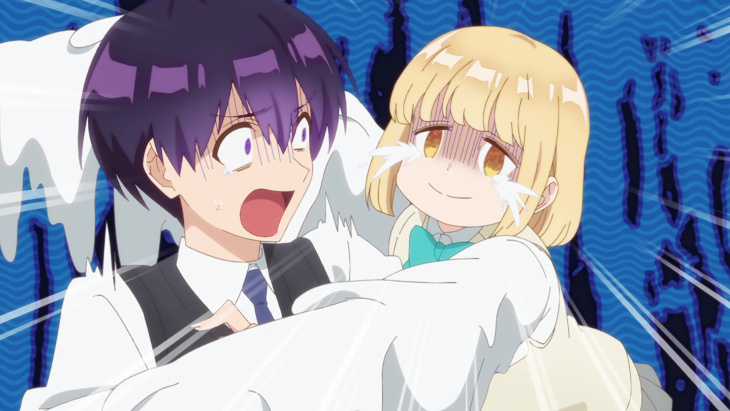
So, if the primary relationship doesn’t really work romantically or comedically, where does the appeal of the series lie? To answer that question, I’d say Shikimori’s Not Just a Cutie takes the award for “The Best Secondary Cast” of this past season. Most of the laughs and dramatic engagement were drawn from Izumi and Shikimori’s friends and classmates. From Izumi’s laid-back goofball of a best friend, Inuzuka, to Shikimori’s in-your-face enthusiastic friend, Nekozaki, they provide a colorful selection of personalities and sources of humor. The MVP though is undoubtedly Hachimitsu, the small, expressionless ball of hilarity. The show didn’t make me laugh often, but when it did, it was usually due to some visual gag or joke involving her. From the angry veins popping up on her otherwise placid face as someone puts a bow on her, to the way she simply cracks her shoulder, Hachimitsu was consistently my favorite member of the cast. The show is also quite capable when using these side characters for drama, as a story involving one of their classmates, Kamiya, was legitimately emotional, and Nekozaki and even Hachimitsu carried some good dramatic episodes. I mentioned it before, but Shikimori’s Not Just a Cutie doesn’t appear to be built around the milestones of its primary couple, but rather the natural milestones of high school life. This may be why the secondary cast ends up making more of an impression than the leads, as they’re always involved in the events as well and are never far away. Horimiya is a recent example of a romantic comedy that I believe did a better job of balancing those two aspects, giving us ample time with the lead couple, both in and out of school. By the end, Shikimori’s Not Just a Cutie had the strange scenario where I’d find myself disappointed to be focusing on the main couple, because I’d rather spend time with the rest of the cast.
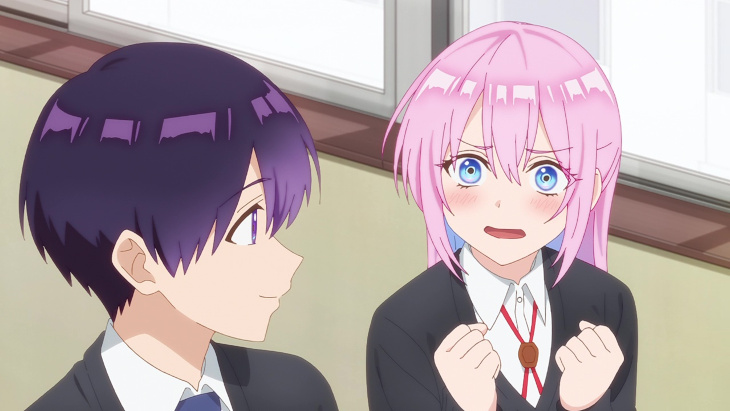
Now that I think about it, it’s been a little while since I’ve watched a Doga Kobo project. The last one I watched was Sing “Yesterday” for Me, a show which started strong and ultimately didn’t go anywhere. They’ve had some good comedic showings over the years with series like Monthly Girl’s Nozaki-kun or How Heavy are the Dumbbells You Lift?, and their ability to convey visual humor and implement good timing are well represented here. I didn’t find the majority of the gags regarding Izumi’s unluckiness to be funny, but that’s an issue with the subject matter rather than the execution. The OP and ED are both cute and enjoyable, both in terms of their animation and music. However, given the video game/chibi aesthetic of the ED, I could never shed the sense that maybe Shikimori was cheating off of Horimiya’s paper. There were two visual choices that I could never quite adapt to, though. The first pertained to a number of the characters, and it had to do with the coloration of the eyes. A number of characters have peculiar or rare eye colors, including our leads. Izumi has purple eyes and Shikimori has bright blue eyes. This normally wouldn’t bug me, but the colors are quite bright, and the borders of the iris have a gradient where they transition into the whites of the eyes. As a result, the eyes always look a little blurry, which is a stylistic choice that constantly draws my eye. The other decision I actually understand even less. When Shikimori wears her hair down, the shadows on her hair, around the nape of her neck, are a light blue. For a character with pink hair, this doesn’t make sense. I know naturally pink hair itself doesn’t make sense either, but I’m acclimatized to that. What I’m not used to are shadows that don’t make sense in relation to one another. And keep in mind, this is the only place where her hair has blue shadows. Everywhere else, it’s shaded according to how an artist would normally shade pink. These could be very personal pet peeves, but they’re pet peeves that lasted all twelve episodes.
Before I wrap up, a few Notes and Nitpicks:
- My favorite episode of the season was probably episode 10. Unsurprisingly, that’s the episode that centered around Hachimitsu, but it also didn’t hurt that the plot delved into some social issues that resonated with me.
- I’d been wondering about Shikimori‘s odd production schedule. Evidently the studio had a COVID outbreak which disrupted production. Between a week off and a clips show, it was the last of the spring shows to wrap up, by a decent margin, but I’m glad they accepted those delays rather than endanger their staff.
- I’m not champing at the bit for another season of this, but if it does get one, I’d be open to following the series further. Whether I’d make time for it really depends on what else would be coming out that season. The romance does get better towards the very end, so a second season may capitalize better on those elements.

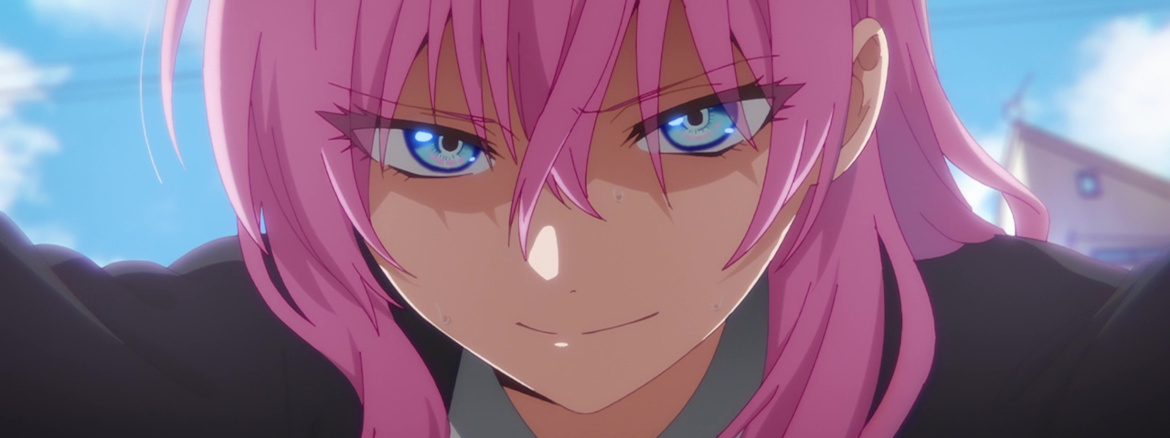


Add comment